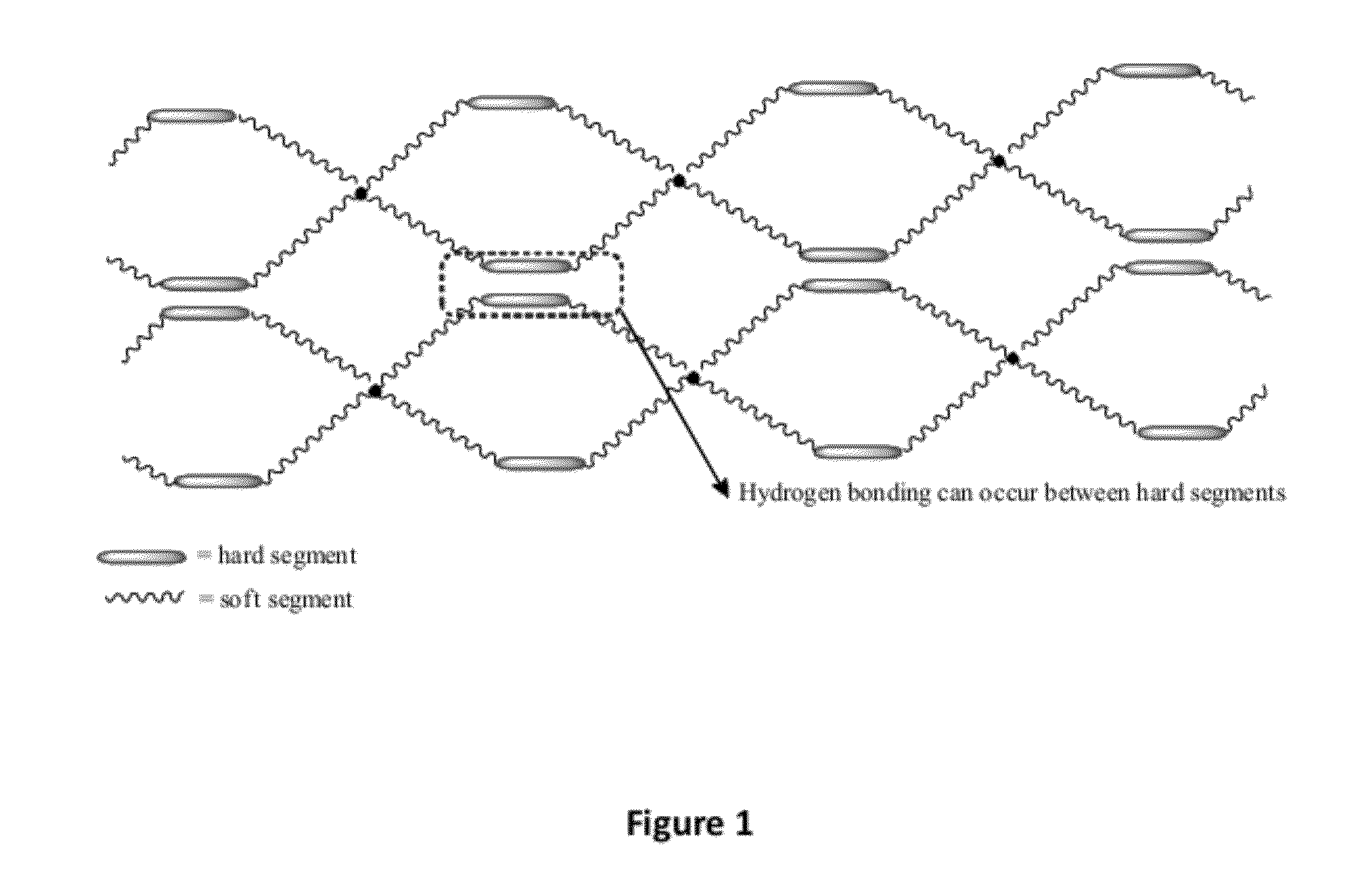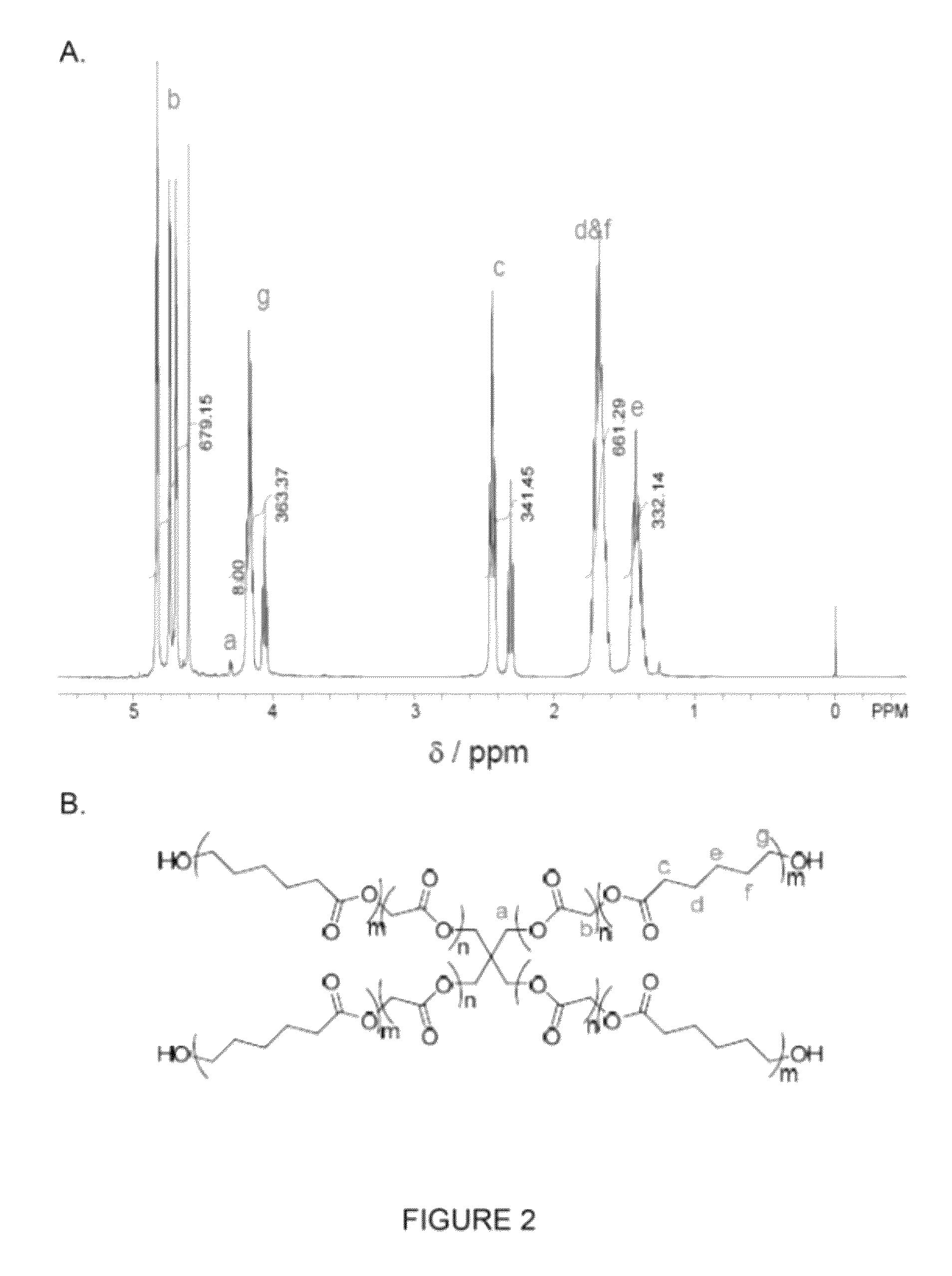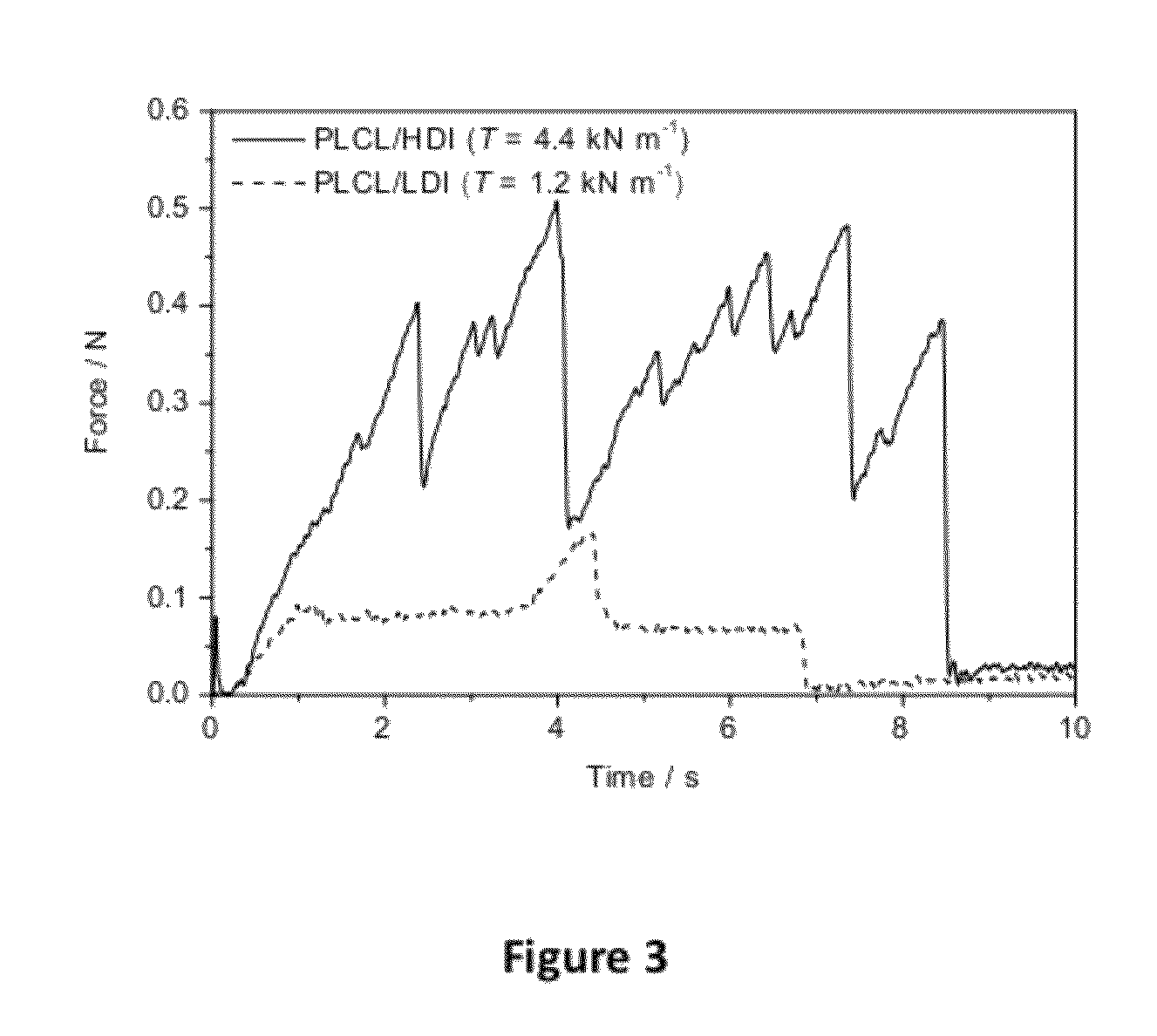Bioresorbable thermoset polyester/urethane elastomers
a technology of thermoset polyester and urethane, which is applied in the field of bioresorbable thermoset polyester/urethane elastomers, can solve the problems that the bioresorbable elastomers currently known in the art have not achieved high tensile strength, low permanent deformation, and flexibility at the same time. achieve the effects of low permanent deformation, high degree of flexibility, and high tensile strength
- Summary
- Abstract
- Description
- Claims
- Application Information
AI Technical Summary
Benefits of technology
Problems solved by technology
Method used
Image
Examples
example 1
Synthesis of 4-Arm PGCL Prepolymer
[0029]A 250 mL round-bottom flask was dried in oven at 110° C. and then cooled down to room temperature under a nitrogen atmosphere. Then, the flask was charged successively with Sn(Oct)2 (90 mg), pentaerythritol (400 mg), glycolide (60.0 g), and ε-caprolactone (60.0 g). Subsequently, the flask was equipped with a magnetic stirrer bar and a three-way valve connected to a nitrogen balloon. The flask was thoroughly degassed under reduced pressure and flushed with nitrogen. This process took 2-3 h. The flask was then placed into an oil bath (with 1000 mL silica oil) which was preheated to 185° C. The temperature of the oil bath quickly dropped to 155˜160° C. Meanwhile, the solid in the flask started to melt. Under vigorous stirring, the liquid in the flask became clear after 1˜2 min. Generally, the stirrer bar stopped within 5 min due to an increase in the viscosity of the liquid. The reaction was continued at 170° C. for another 22 h under a nitrogen ...
example 2
Fabrication of Thermoset PEU Elastomeric Films
[0030]A 4-arm PGCL (50:50) Mn 40000 g / mol (1.0 g) and hexamethylene diisocyanate (HDI) 125 μL were dissolved in 10 mL dichloromethane. The solution was placed in a aluminum pan with diameter of 9 cm. The solvent was evaporated at room temperature (ca. 20° C.) for 3 h. The residual film was cured in a 100° C. oven for 16 h.
example 3
Varying Mechanical Properties Depending Choice of Cross-Linker and Ratio of Cross-Linker to Prepolymer
[0031]Films were prepared in a similar manner to that outlined in Example 2 using a prepolymer PLCL (50:50) Mn of 56000 g / mol and either an asymmetric isocyanate, lysine diisocyanate (LDI), or a symmetrical one, (HDI, as crosslinking agent. The films were cured in the presence of 0.1% zinc octoate at 60° C. for 20 hrs. Table 4 shows resulting mechanical properties of films prepared from PLCL 50:50 prepolymer using several varying ratios of LDI and HDI. The ratio of isocyanate to prepolymer (NCO:OH) was optimized to maximize the mechanical properties.
[0032]
TABLE 4Mechanical properties of PLCL-LDI & PLCL-HDI films with differentmol:mol ratio NCO:OHIso-NCO:OHESmaxγbTSample IDcyanate(mol:mol)(MPa)(MPa)(%)(kN m−1)113-021-04LDI1:1Film too tacky to measuremechanical properties113-026-01LDI3:12.41.73501.1113-026-02LDI4:12.31.32001.3113-026-03LDI5:12.41.63901.2113-026-04LDI6:1Film too tacky ...
PUM
| Property | Measurement | Unit |
|---|---|---|
| average molecular weight | aaaaa | aaaaa |
| average molecular weight | aaaaa | aaaaa |
| elongation at break | aaaaa | aaaaa |
Abstract
Description
Claims
Application Information
 Login to View More
Login to View More - R&D
- Intellectual Property
- Life Sciences
- Materials
- Tech Scout
- Unparalleled Data Quality
- Higher Quality Content
- 60% Fewer Hallucinations
Browse by: Latest US Patents, China's latest patents, Technical Efficacy Thesaurus, Application Domain, Technology Topic, Popular Technical Reports.
© 2025 PatSnap. All rights reserved.Legal|Privacy policy|Modern Slavery Act Transparency Statement|Sitemap|About US| Contact US: help@patsnap.com



